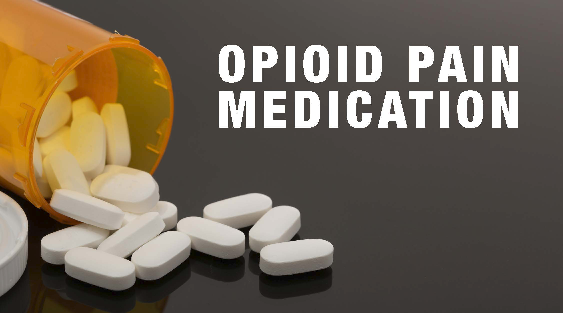Opioids are a class of drugs that include natural opiates derived from the opium poppy plant, as well as synthetic and semi-synthetic substances that mimic the effects of natural opioids. These drugs are known for their powerful pain-relieving properties, but they also carry a risk of dependence, tolerance, and addiction. Opioids work by binding to specific receptors in the brain and spinal cord known as opioid receptors.
There are three main types of opioids:
- Natural Opioids:
- Morphine: Derived from the opium poppy plant, morphine is one of the oldest and most potent natural opioids. It is often used in medical settings for severe pain.
- Codeine: Also derived from the opium poppy, codeine is less potent than morphine and is commonly used for pain relief and cough suppression. It is sometimes combined with other medications.
- Semi-synthetic Opioids:
- Oxycodone: This opioid is synthesized from thebaine, a component of opium. Oxycodone is used for the treatment of moderate to severe pain and is found in various formulations, such as immediate-release and extended-release tablets.
- Hydromorphone: Derived from morphine, hydromorphone is a semi-synthetic opioid used for pain management.
- Synthetic Opioids:
- Fentanyl: A potent synthetic opioid, fentanyl is often used in medical settings for pain management, especially in cases of severe pain or during surgery. Illicitly manufactured fentanyl has been a significant contributor to opioid-related overdoses.
- Methadone: While originally developed for the treatment of opioid addiction (opioid maintenance therapy), methadone is also used for chronic pain management.
Opioids are commonly prescribed by healthcare providers to manage acute pain, such as that following surgery or injury, or for certain chronic pain conditions. However, due to their potential for abuse and addiction, there has been increasing concern about the overuse and misuse of opioids, leading to a public health crisis of opioid addiction and overdose deaths in many parts of the world.
The easiest path for anyone concerned about abusing opioid pain relievers is avoiding these drugs completely. However, it is likely that, somewhere in your future you might require the need for opiate painkillers once more. Should you need to take these drugs in the future, do so under the close observation of the physician who prescribed them. Maintain the dosage as it has been prescribed and only take what is necessary to alleviate your pain.

Keep in mind that opioid pain relievers should only be used for brief amounts of time to treat moderate to severe pain symptoms. These drugs alter the brain’s chemical structure after extended abuse. Therefore, you are not only putting yourself at risk for continued dependency, but also potentially harmful and irreversible neurological problems.
All opioid analgesics include this chance of dependency, which is why they are categorized as Schedule IV drugs. Even though they have an accepted medical use, there is still a relatively low potential for either physical or psychological dependency. Therefore, an opioid addict’s best chance of recovery lies in his or her avoidance of future drug uses and exploring of other non-pharmacological methods of pain relief.
If you have chronic pain and are trying to avoid using opiate pain medications, ask your physician about the following alternative treatments for pain, described by AARP The Magazine:
- Dietary supplements, like glucosamine and chondroitin, which might help to alleviate pain associated with conditions like arthritis
- Acupuncture, which has been found to relieve pain symptoms associated with various illnesses
- Herbal and natural supplements
- Spinal manipulation
- Physical therapy
- Yoga
- Pilates
- Nutrition––diets rich in fish and flaxseed include an abundance of Omega-3 fatty acids that relieve inflammation
- Biofeedback
- Massage
Remember, an individual prone to addiction, such as a recovering addict, will be putting his or her sobriety at risk if they begin taking prescription drugs like Tramadol again. If you are currently taking these drugs and are afraid of becoming addicted or if you realize that you have become addicted, seek out the help of an experienced substance abuse treatment provider today.
How Do Opioids Work ?
Opioid drugs bind to opioid receptors in the brain, spinal cord, and other areas of the body. They tell your brain you’re not in pain.
They are used to treat moderate to severe pain that may not respond well to other pain medications.
Opioid drugs include:
- Codeine (only available in generic form)
- Fentanyl (Actiq, Abstral, Duragesic, Fentora)
- Hydrocodone (Hysingla, Zohydro ER)
- Hydrocodone/acetaminophen (Lorcet, Lortab, Norco, Vicodin)
- Hydromorphone (Dilaudid, Exalgo)
- Meperidine (Demerol)
- Methadone (Dolophine, Methadose)
- Morphine (Kadian, MS Contin, Morphabond)
- Oliceridine (Olynvik)
- Oxycodone (OxyContin OxyContin, Oxaydo)
- Oxycodone and acetaminophen (Percocet, Roxicet)
- Oxycodone and naloxone
Opioid Side Effects
One of the reasons why your doctor needs to manage pain medications so closely is that they can cause side effects, such as:
- Constipation
- Drowsiness
- Nausea and vomiting
The drugs lubiprostone (Amitiza), methylnaltrexone (Relistor), naldemedine (Symproic), and naloxegol (Movantik) are approved to treat constipation due to opioid use in those with chronic pain.
Opioids can be dangerous if you take them with alcohol, or with certain drugs such as:
- Some antidepressants and anxiety medications (particularly benzodiazepines such as alprazolam, ativan and clonazpam)
- Some antibiotics
- Sleeping pills
Make sure your doctor knows all of the other medicines you’re taking. That includes:
- Prescription drugs
- Over-the-counter drugs
- Herbal supplements
Opioid Tolerance and Addiction
After taking opioid pain medication for a while, you might find that you need more and more of the drug to achieve the same effect in easing pain. This is called tolerance. It’s not the same as addiction, which involves a compulsive use of a drug.
When you use opioid medication over an extended period of time, you can have dependence. This can happen when your body becomes so used to the drug that if you abruptly stop taking it, you get withdrawal symptoms such as:
- Diarrhea, nausea, and vomiting
- Muscle pain
- Anxiety
- Irritability
You can also get a serious addiction to opioid pain medications. People who are addicted compulsively seek out the pain medications. Their behavior usually leads to negative consequences in their personal lives or workplace. They might take someone else’s pills or buy them off the street, which is especially dangerous since those drugs are often laced with lethal amounts of fentanyl. Learn more about what can happen when opioid addiction goes untreated.
If you are having a problem with addiction, you need to see your doctor or an addiction specialist.
Opioids are powerful analgesic (pain-relieving) medications that work by binding to specific receptors in the brain and spinal cord, known as opioid receptors. While they can be effective in managing acute pain or severe pain associated with certain medical conditions, there are significant concerns about the long-term use of opioids due to the potential for adverse effects, tolerance, dependence, and the risk of addiction.
Why Should Opioid Only be Used for Short-Term ?
Here are several reasons why opioids are generally recommended for short-term use:
- Risk of Tolerance: With prolonged use, the body can develop tolerance to the effects of opioids. This means that over time, higher doses may be required to achieve the same level of pain relief.
- Risk of Dependence: Dependence can develop with regular opioid use, leading to withdrawal symptoms when the medication is reduced or discontinued. Dependence is not the same as addiction, but it is a physiological response to the presence of the drug.
- Potential for Addiction: Opioids have a high potential for addiction, especially when used over an extended period. Addiction is a complex condition characterized by compulsive drug use despite harmful consequences.
- Adverse Effects: Opioids can cause various side effects, including constipation, drowsiness, nausea, and respiratory depression. Long-term use increases the likelihood of experiencing these side effects.
- Increased Risk of Overdose: Prolonged use of opioids can increase the risk of overdose, particularly if individuals develop tolerance and inadvertently take higher doses in an attempt to achieve the desired pain relief.
- Effectiveness Diminishes Over Time: Studies have suggested that the effectiveness of opioids for chronic pain may diminish over time, and the risks may outweigh the benefits in the long run.
- Alternative Treatment Options: There is a growing recognition of the importance of exploring non-opioid and multidisciplinary approaches for managing chronic pain. These may include physical therapy, cognitive-behavioral therapy, exercise, and other interventions.
It’s important to note that in certain situations, such as end-of-life care or severe and unmanageable pain due to specific medical conditions, opioids may be used for more extended periods under close medical supervision. However, even in these cases, healthcare providers aim to balance pain management with the potential risks associated with opioid use.
Pain Medications, Pain Relief, and Pain Management




